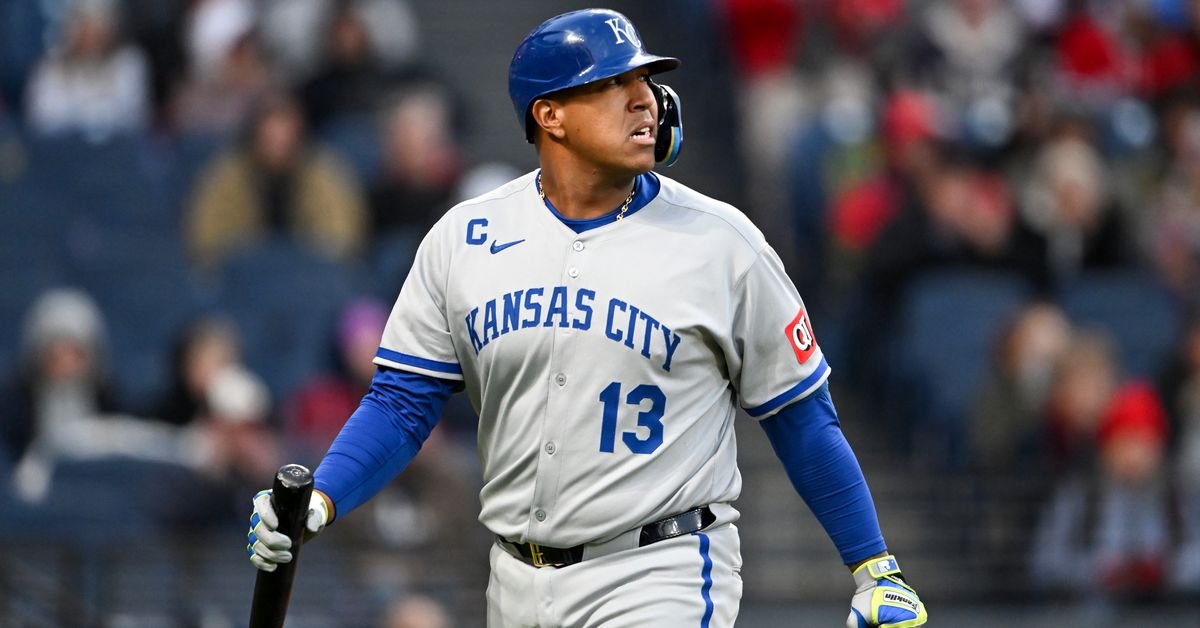Baseball players all age out of the game, but they take different paths. Some players reach their athletic peak in their mid-20s and then struggle to maintain their game even into their late 20s or early 30s. (Eric Hosmer comes to mind). Other players have a gradual decline after peaking in their late 20s and are able to contribute into their 30s (a Mike Sweeney or Lorenzo Cain). Then there are the guys who just fall off a cliff at the drop of a hat, playing as a shell of themselves afterwards (Alex Gordon).
Salvador Perez, the Kansas City Royals captain and sole member of the 2015 World Series champion squad still holding a job as a player in Major League Baseball, just turned 35 years old this May. We all know that he will age and retire just like every single one of the 20,035 MLB players to come before him.
But how will it happen? That is hard to guess, especially because Salvy has fooled all of us in the past. In 2018, Salvy only hit .235/.274/.439 and then missed the entirety of 2019 due to Tommy John surgery. It seemed like Salvy’s days might be numbered—but then he dominated the COVID-shortened 2020 season and smacked 48 home runs in 2021. After faltering offensively in 2023, he came back last year to hit .271/.330/.456 and win his fifth Silver Slugger award.
This year, however, Salvy’s playing has been mostly disastrous. Salvy turned in a Golden Sombrero performance on Saturday night, striking out swinging four times on very bad pitches. From a production standpoint, nothing is going good. After Saturday’s performance, he was not hitting for any average (.228), he was not getting on base whatsoever (3.9% walk rate and a .264 OBP), and his isolated power of .116 was below the career ISO (.119) of noted power hitter Garrett Hampson.
And then Salvy went out and had a great Sunday, taking a walk and crushing a two-run home run to tie the game. He looked like a totally different player.
Will this home run be the catalyst for a hot streak? Let’s hope so. The good news is that Salvy has gone through streaks very similar to the 61-game streak this year that saw him bottom out at a .608 OPS after Saturday pretty much every year. In each of the last four seasons, Perez has gone through huge stretches where his production was nonexistent. Each of these four major slumps went between 46 and 82 games and featured an OPS below .655.
Recent Salvy Slumps
| Year | Games | Average | OBP | SLG | OPS |
|---|---|---|---|---|---|
| Year | Games | Average | OBP | SLG | OPS |
| 2025 | 61 | 0.228 | 0.264 | 0.344 | 0.608 |
| 2024 | 58 | 0.220 | 0.273 | 0.381 | 0.654 |
| 2023 | 82 | 0.224 | 0.263 | 0.332 | 0.596 |
| 2022 | 46 | 0.203 | 0.241 | 0.401 | 0.642 |
We tend to memory-hole those stretches because of how well Salvy produces in the non-slumps, but when Salvy is in a bad stretch, whooooo boy it is not great.
This is the case because there is basically nothing in Salvy’s game to mitigate streaky or unlucky hitting. Perez has swung at a greater percentage of pitches (58.7%) than any of the other 198 players with at least 1,500 plate appearances over the last five years. He doesn’t walk, and so if he’s not getting hits, he’s not getting on base anyhow. And among that same set of players over that same length of time, Salvy has been the second-least valuable baserunner in the league, meaning that he has to hit for power to provide much offensive juice.
But as we saw Sunday, Salvy still has power. His max exit velocity is in the 91st percentile, and his expected stats suggest he has been incredibly unlucky on balls in play (for instance, he should have three more home runs this year than he has).
We know that Salvador Perez, Captain, World Series Champion won’t be able to play forever. We also know that Salvy is streaky and has a recent history of slumbering for swaths of the season. Hopefully Sunday is an indication that Salvy’s bat is waking up, ready to do damage to any pitcher that dares throw him a strike.
